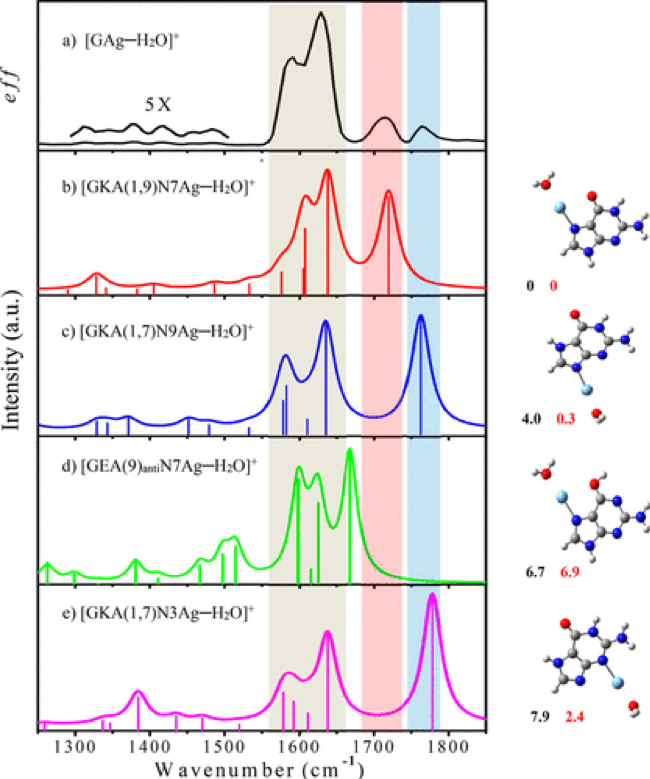The five bases of DNA and RNA form specific pairs whose recognition takes place via intermolecular hydrogen bonds. They exist in several tautomeric forms (constitutional isomers), but only one tautomer is used for specific recognition and transfer of genetic information. If an unusual tautomer is introduced into DNA or RNA, the hydrogen bonding pattern changes and hence the recognition failure leads to a point mutation. Characterization of the structure of guanine tautomers (which exhibits the greatest number of tautomeric forms) and their relative stability in different environments has been of great interest for a long time. In solution, cations can bind to bases and thus promote other tautomers, losing the specific hydrogen bond pattern existing between complementary bases; the interaction of guanine with different cations has been widely studied, and it has recently been demonstrated that the Ag+ ion leads to the same pattern of interaction as the H+ ion. Researchers from the University of Cordoba and ICP compared the experimental IRMPD spectra of three ionic complexes between guanine (G) and silver (Ag+), [GAg-H2O]+, [GAgG]+ and [ GAg]+, to the calculated theoretical spectra. They show that there are two isomers of each complex containing two different tautomers, that the complexes are formed in solution and that their structure is maintained during evaporation in the mass spectrometer source. This study confirms the results obtained by other analytical techniques and will lead to a better understanding of the recognition between nucleobases. This study is published in Journal of Physical Chemistry.

